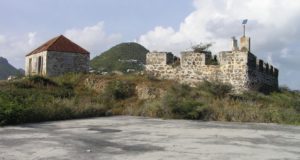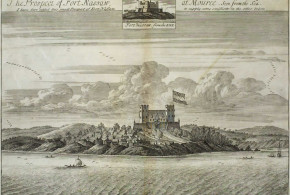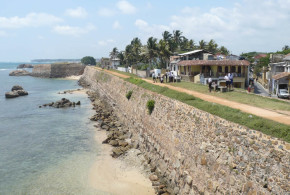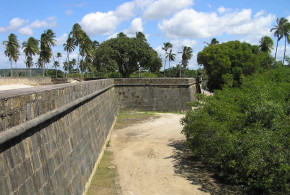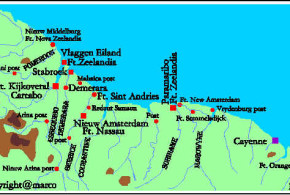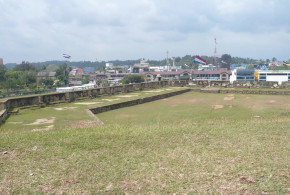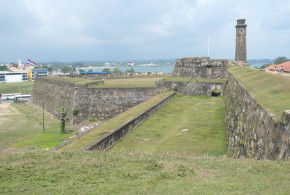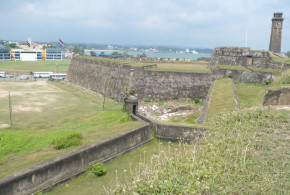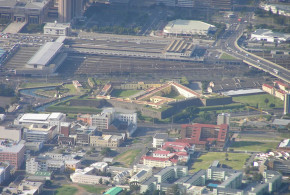Written by Marco Ramerini. English text revision by Dietrich Köster.
DUTCH EMPIRE: CEYLON (SRI LANKA)
CEYLON-SRI LANKA:
– Various Authors “History of Ceylon” Vol. 1, parts 1 & 2: “Pre-Colonial Period” University of Ceylon, 1959/60, Colombo, Sri Lanka. Vol. 2: “History of Sri Lanka vol. II (1500-1800)”, 614 pp., edited by K.M. de Silva, University of Peradenya, Ceylon, 1995, Colombo, Sri Lanka. Index: Sri Lanka in the early 16th century: political conditions, by C.R. de Silva; Sri Lanka in the early 16th Century: economic & social conditions, by C.R. de Silva; The rise and fall of the Kingdom of Sitavaka 1521-1593, by C.R. de Silva; The Kingdom of Jaffna, by C.R. de Silva & S. Pathmanathan; Portuguese rule in Kotte 1594-1638, by T.B.H. Abeyasinghe; The Kingdom of Kandy: foundations and foreign relations to 1638, by T.B.H. Abeyasinghe; Expulsion of the Portuguese from Sri Lanka, by C.R. de Silva; The Kandyan Kingdom 1638-1739: a survey of its political history, by L.S. Dewaraja; The consolidation of Dutch power in the Maritime regions 1658-1687, by S. Arasaratnam; The VOC in Sri Lanka 1688-1766: problems and policies, by D.A. Kotelawele; The Kandyan Kingdom and the Nayakkars 1739-1796, by L.S. Dewaraja; Administrative sistems: Kandyan and Dutch-by L.S. Dewaraja, S. Arasaratnam & D.A. Kotelawele; The social and economic conditions in the Kandyan Kingdom in the 17th and 18th centuries, by L.S. Dewaraja; Sri Lanka’s trade, internal and external in the 17th and 18th centuries, by S. Arasaratnam; The Voc in Sri Lanka 1658-1796: social and economic change in the maritime regions, by D.A. Kotelawele; Religion and the state in the Kandyan Kingdom: the 17th and 18th centuries, by L.S. Dewaraja; Literature in Sri Lanka: the 16th, 17th and 18th centuries, by K.N.O. Dharmadasa; Sri Lankan art and architecture during the 16th, 17th and 18th centuries-by Sirima Kiribamune; The English East India Company and Sri Lanka 1760-1796-by Sinharaja Tammita-Delgoda. Vol. 3: “The British Rule 1796-1948” University of Ceylon, 1973, Colombo, Sri Lanka.
– Various Authors, “The Dutch Reformed Church in Sri Lanka (Ceylon): 350th anniversary, 1642-1992”, 34 pp., illustrations The Church, 1992, Colombo, Sri Lanka.
– Various Authors, “Don Peter felicitation volume: tribute to a Sri Lankan scholar, educator and historian on his sixty-fifth birthday”, xxxi + 245 pp. Candappa, E. C. T. & Fernadopulle, M. S. S. (editors), D.P.F. Committee, 1983, Colombo, Sri Lanka. Don Peter: a Biographical sketch; Bibliography of Reverend Dr Don Peter; Boudens, R., “The establishment of the Papal Seminary in Kandy, Ceylon in 1893”, pp. 1-9; Camps, A., “Father Felice Zoppi da Cannobio, OFM, in Sri Lanka, 1853-1857. Pioneer of the Catholic Education in Kandy”, pp. 11-17; Ross Carter, J., “From controversy to understanding: a century of progress”, pp. 19-34; Silva, Chandra Richard de, “The Kigdom of Kotte and its relations with the Portuguese in the early sixteenth century “, pp. 35-50; Disney, A., “The Portuguese overland courier service between Europe and India in the sixteenth and seventeeth century”, pp. 51-63; Fernando, P. E. E., “Rajputs in Sri Lanka”, pp. 65-80; Goonetilleka, M. H., “The Christian contribution to early Singhala theatre”, pp. 81-104; van Goor, J., “Protestantism and other religions under the Dutch in Sri Lanka”, pp. 105-118; Hulugalle, H. A. J., “Musings of a journalist”, pp. 119-127; Jansz, E. R., “Education in Chemistry in Sri Lanka vis-a-vis the demands of Applied Research”, pp. 129-141; Kurunatillake, W.S., “Nominal inflection in Sri Lanka Gypsy Telugu: an outline”, pp. 143-149; Khanna, K.C., “The origin and growth of the Bhakti Movement” pp. 151-161; Kurukulasuriya, G.I.O.M., “The dual economy and the Global Community in formation”, pp. 163-180; Meersman, A., “Non-Portuguese Franciscans in the Padroado Mission of Sri Lanka”, pp. 181-188; Reynolds, C.H.B., “A petition from Bhikkhu Pattapola Gotama in the India Office Library”, pp. 189-193; Saltman, A., “Political theory and politics in the writings of John Salisbury”, pp. 195-209; Ugawa, K., “Feudal aristocracy of Japan” pp. 211-221; Winius, G., “The Portuguese Asian decadencia, revisited: an interpretation”, pp. 223-236; Monteiro Lopes, E., “Alia (the Singhala term aliya, elephant, in Portuguese literature)” pp. 237-245.
– Various Authors, “Education in Ceylon from the 16th century to the present day. A centenary volume”, Ministry of Education and Cultural Affairs, 1969, Colombo, Sri Lanka. Index: Don Peter, “Portuguese Missionary activity in the sphere of education”, pp. 283-292; Don Peter, “The Portuguese and the study of the National Languages”, pp. 293-302; Mottau S., “Education under the Dutch”, pp. 304-318; Sannasgala, P. B., “The influence of the Portuguese and the Dutch on the life and thought of the people”, pp. 337-347.
– Various Authors “Goonewardena felicitation volume” Special issue of “Modern Sri Lanka Studies”, 1989, Peradenya, Sri Lanka. Index: Kotelawele, D.A. Realms of law: judicial procedures of the Low Country Singhalese during Dutch rule in Sri Lanka”, pp. 112-120; Kanapathipillai, Vamadeva, “Helen or costly bride: the VOC and the cinnamon trade of Sri Lanka, 1766-1796”, pp. 133-146. – Various Authors, “1694 Census in Jafnapatnam: city and castle”, Internet article.
– Various Authors, “The recapture of Negombo by the Dutch in 1643”, in: “Ceylon Literary Register” pp. 84-86.
– Various Authors, “The Dutch-Singhalese alliance against the Portuguese in 1639”, in: “Ceylon Literary Register” pp. 116-117.
– Various Authors “The Turnour manuscript” In: “Historical Manuscript Commission, Ceylon” n°1 May 1937, pp. 16-20.
– Various Authors, “Sessional Papers. Sitawaka”, in: “Antiquarian research Kegalla”, pp. 62-65.
– Various Authors, “Sessional Papers. Menikkadawara, Arandara, Diyasunnata, Mottappoliya”, in: “Antiquarian research Kegalla”, pp. 30-37.
– Andriesz, G., “Ceylon and the Singhalese”, in: JRASC, Vol. XXXVIII, n° 106, 1948, pp. 75-83.
– Anthonisz, R.G., “The Dutch in Ceylon: early visits and settlement in the island”, viii + 198 pp., C.A.C. press, 1929 Colombo, Sri Lanka.
– Arasaratnam, S., “Ceylon and the Dutch 1600-1800”, 344 pp., Variorum, 1996, United Kingdom. A collection of 20 interesting articles on Dutch-Ceylon history: Index: Ceylon and the Dutch 1630-1800: an essay in historiography; Dutch sovereignty in Ceylon: a historical survey of its problems; The Kingdom of Kandy: aspects of its external relations and commerce; J.H.O. Paulusz on the Westervolt treaty in Ceylon: a rejoinder; William Hubbard fellow-prisoner of Knox in Kandy 1660-1703; Vimala Dharma Surya II (1687-1707) and his relation with the Dutch; Baron van Imhoff and the Dutch policy in Ceylon 1736-1740; the administrative organization of the Dutch East India Company in Ceylon; the Vanniar of north Ceylon: a study of a feudal power and central authority; the indigenous ruling class under colonial rule in Dutch maritime Ceylon; Social history of a dominant caste society: the Vellalar of north Ceylon in the 18th century; Dutch commercial policy in Ceylon and its effects on Indo-Ceylon trade 1690-1750; elements of social and economic change in Dutch maritime Ceylon 1658-1796; historical foundation of the economy of the Tamils of north Sri Lanka; Ceylon in the Indian Ocean trade 1500-1800; oratorians and predicants: the Catholic Church in Ceylon under Dutch rule; Reverend Phillipus Baldeus: his pastoral work in Ceylon 1656-1665; Protestants: the first phase 1650-1800; the first century of Protestant Christianity in Jaffna; Sri Lanka’s Tamil under colonial rule.
– Arasaratnam,S., “Dutch power in Ceylon 1658-1687”, 256 pp., 1 map, Navrang, 1988, New Delhi, India. A very detailed study on the first period of Dutch rule in Ceylon. Index: Dutch power in Ceylon 1658-1664: readjustment with Raja Sinha, the Kandyan rebellion and Dutch expansion 1664-1670, Raja Sinha retaliates: the Dutch-Kandyan struggle 1670-1676, a policy for Ceylon, last years of Raya Sinha: stalemate 1682-1687, administrative and economic organisation in Dutch territories, Ceylon’s trade and the Dutch, cinnammon, Dutch policy towards colonisation, religious policy and impact on society.
– Arasaratnam, S. “Sri Lanka, history”, in: “Enciclopaedia Britannica”.
– Armstrong, James C., “The Ceylon connection: convicts and exiles from Ceylon sent to the Cape of Good Hope during the Dutch East India Company period”, Australian Humanities Review. Abstract of a paper presented at the Interdisciplinary conference “Colonial places, convict spaces: penal transportation in global context, ca. 1600-1940”, 9-10 December 1999, Department of Economic & Social History, University of Leicester, United Kingdom.
– Baldaeus, Philip, “A Description of the great and most famous Isle of Ceylon”, 165 pp., maps, Reprint of the 1703 edition, Asian Educational Services, 1996, New Delhi-Madras, India. The Ceylon related chapters extracted from Baldaeus’s “A Description of East India Coasts of Malabar and Coromandel and also of the Isle of Ceylon”, Volume n° 3. Beautifully illustrated with maps and line drawings.
– Boudens, R., “The Catholic Church in Ceylon under the Dutch rule 1658-1796”, 267 pp., 2 maps, Bibliotheca Missionalis n° 10, Catholic Book Agency, 1957, Rome, Italy. Index: Bibliography pp. 1-28; 1- The Catholic Church at the end of the Portuguese era, pp. 30-59; 2- The Dutch conquest 1638-1658, pp. 60-72; 3- The dark days 1658-1687, pp. 73-88; 4- The venerable father Joseph Vaz in Ceylon 1687-1711, pp. 89-115; 5- Further development of the mission 1711-1732, pp. 116-131; 6- The growth of Catholic resistance 1733-1762, pp. 132-157; 7- The last decades of Dutch rule 1762-1796, pp. 158-172; 8- Oratorian missionary methods, pp. 173-188; 9- Catholicism under the Kandyan Kings, pp. 189-202; 10- The Dutch Reformed Church in Ceylon, pp. 203-212; Appendix pp. 225-258.
– Brohier, R. L., “Links between Sri Lanka and the Netherlands. A book of Dutch Ceylon”, 165 pp., several illustrations, Netherlands Alumni Association of Sri Lanka, 1978, Colombo, Sri Lanka. A beautiful book with the description of the Dutch influence in the monuments, forts, canals, buildings, law, religion and language of Sri Lanka. Index: The era of expansion, early contacts, Holland’s first envoy, the territorial link with Sri Lanka, armorial bearings, monumental legacies of the colonial Dutch: forts and fortresses, town planning and architectural norms, colonial Dutch furniture, their churches, canals and irrigation, the administration of land, administration of justice in Ceylon in the Dutch period, a symposium: the Dutch records, the origin of the archives, the memoirs of the Dutch governors.
– Brohier, Richard Leslie and Raheem, Ismeth, “Changing face of Colombo, 1505-1972″, covering the Portuguese, Dutch, and British periods. Brohier, Richard Leslie, Views of Colombo, 1518-1900”, xv + 68 pp., 11 maps and illustration, 22 plates, Lake House Investments, 1984, Colombo, Sri Lanka. In the Portuguese Era; The Dutch take-over; The Hollander’s Colombo; New light on an old controversy; Facets of early British times; Topography of Colombo in the early half of the 19th century; Days gone away; Views of Colombo (1518-1900).
– Brohier, Richard Leslie, “Discovering Ceylon”, 222 pp., plates, illustrations, maps, folding plan, Lake House, 1982, Colombo, Sri Lanka.
– Brohier, Richard Leslie, “De Wolvendaalsche Kerk: a souvenir of the Dutch Church at Wolvendaal, Colombo, Ceylon : built anno 1749”, 28 pp., 1938 (revised and reprinted 1957, 42 pp.), Colombo, Sri Lanka, illustrations, Netherlands Alumni Association of Sri Lanka and through the courtesy of the General Consistory of the Dutch Reformed Church, 1980
– Brohier, Richard Leslie, “Nursery of Dutch history in Ceylon”, Article in: “Ceylon Daily News”, 20th January 1939, Colombo, Sri Lanka.
– Brohier, Richard Leslie, “Church of many memories”, Article in: “Ceylon Observer”, Sunday Edition 4th October 1942, Colombo, Sri Lanka.
– Brohier, R. L. & Paulusz. J. H., “Land, maps & surveys. Descriptive catalogue of historical maps in the Surveyor General’s Office, Colombo”, Vol. 2, 195 pp. + LIV plates, 1951, Colombo, Sri Lanka.
– Brohier, Richard Leslie, “Furniture of the Dutch period in Ceylon”, State Printing Corporation, 1978, Colombo, Sri Lanka.
– Bulathsinhala, I. & Kuru-Utumpala, J., “In touch with the old times”, Article in: “Midweek Mirror”, Vol. 5/14, 26-04-2000.
– Buultjens, A. E. (translated by), “Governor van Eck’s expedition against the King of Kandy 1765”, in: Journal of the Ceylon Branch of the Royal Asiatic Society, Vol. XVI, n°50, 1899, pp. 36-78.
– Caen, A., “The capture of Trincomalee A.D. 1639”, in: “Journal of the Royal Asiatic Society (Ceylon)”, n° 35, 1887, pp. 123-140.
– Caron, F., “Report from Commander Caron presented to the Governor General Antonio van Diemen, containing the events of his expedition to Ceylon dated April 17th 1644”, India Office Library and Records: 1/3/28, DDXII.
– Codrington, Humphrey William, “A short history of Ceylon”, Mc Millan and Company Limited, 1929, London, United Kingdom.
– Coster, W. J., “The capture of Batticaloa by the Dutch in 1638”, in: Ceylon Literary Register, Vol. II, 1887, pp. 44-45 and pp. 52-54.
– Dhananjaya, Adithya, “Karava aristocracy”, Internet article. – Devendra, Tiss, “Our Jewish roots”, in: “Sunday Island”, 31 July 1994.
– Diehl, K.S., “The Dutch press in Ceylon 1734-1796”, in: The Library Quarterly, Vol. XLII, 1972, pp. 329-344.
– Diehl, K.S., “Printers and Printing in the East Indies to 1850: Europeans and Ceylonese from 1505” ?, 600 pp., Aristide D. Caratzas Publications 1993.
– Enriquez, C. M., “Ceylon : Past and Present”, xvi, 256 pp., plates, 1999 (first published London, 1884). Index: I. Ceylon – Past: 1. The geological history of Ceylon. 2. The human history of Ceylon – the great dynasty. 3. The human history of Ceylon–the lesser dynasties. 4. Mahintale – the age of Mahinda. 5. Anuradhapura – the first great capital. 6. Sigiriya – the zenith and decline. 7. Polonnaruwa – the second great capital. 8. Yapahuwa and other capitals of despair. 9. European occupations. 10. Singhalese influence abroad. II. Ceylon – Present: 11. The south coast – the old Dutch towns. 12. Province Uva – a land of tea and rubber. 13. Ceylon highlands. 14. Adam’s peak. 15. Peradeniya – a garden forest. 16. Kandy. 17. Trinco. 18. Jaffna. 19. The triumph of pure reason. 20. The ethnology of Ceylon. 21. Conclusion. Appendices: 1. Itinerary. 2. Notes on travel. 3. The butterflies of Ceylon. Index.
– Feber, J., “Dutch retreat from Kandy, 1765. Justification of Colonel Feber”, in: “Ceylon Literary register”, pp. 505-508.
– Ferguson, Donald, “The Earliest Dutch visits to Ceylon”, 185 pp., (Reprint Journal Royal Asiatic Society Ceylon 1927, 28th edition) 1998.
– Fernando, C. N., “Christianity in Ceylon in the Portuguese and Dutch period”, in: University of Ceylon Review, Vol. VI, 1948, pp. 267-288.
– Franciscus, S. D. (S. Douglas), “Faith of our fathers: history of the Dutch Reformed Church in Sri Lanka (Ceylon)”, viii, 252 pp., Pragna Publishers, 1983, Colombo, Sri Lanka. Index: A brief historical survey; Galle church; Matara church; Jaffna church; Wolvendaal church; the Belfrey at Kayman’s Gate; Maligakande church; Banbalapitiya church; Regent street church; Dehiwela church; Wellawatte church; Nugegonda church; the North Central province; the Tamil church; the Singhala church; Makandura church; the Sunday school; the Presbitery of Ceylon; the annual church conference; the church papers; the Herald; the Duthaya; the Toothan; youth work; the music guild; the youth choir; the D.R.C. seminary & Bible institute; church schools; church seals; Ministers of the Dutch Reformed Church; the Dutch Reformed Church: what she teaches and believes; Wolvendaal: a poem by L.E. Blaze; a calendar of events; bibliography; appendix; the Dutch Reformed Church in Ceylon 1642-1942: a publication on the tercentenary of the Church.
– Frankena, A. & Dufflo, P., “The Dutch retreat from Kandy, 1765. Report of Majors A. Frankena and P. Dufflo, 20th September 1765”, in: “Ceylon Literary register”, Vol. III, October 1934, n°10 pp. 433-438.
– Goonewardena, K.W., “The foundation of Dutch power in Ceylon 1638-1658”, xx, 196 pp., illustrations, maps, Djambatan, 1958, Amsterdam, The Netherlands.
– Goonewardena, K.W., “Dutch policy toward Buddhism in Sri Lanka: some aspects of its impact 1640-1740”, in: “Asian panorama: essays in Asian history past and present”, Delhi, 1990, pp. 319-352.
– Goonewardena, K.W., “Muslims under Dutch rule up to the mid-eighteenth century”, in: “Muslims of Sri Lanka: avenues to antiquity”, Beruwala, 1986, pp. 189-210.
– Goonewardena, K.W., “The accession of Sri Vijaya Rajasimha”, Extract from the “Sesquicentennial Commemorative Volume of the Royal Asiatic Society of Sri Lanka 1845-1995”, Royal Asiatic Society of Sri Lanka, 1995, Colombo, Sri Lanka.
– Haafner, J., “Travels on foot through the island of Ceylon”, 118 pp., Asian Educational Services, 1995, New Delhi, India. (First edition: 1821, London, United Kingdom)
– Hesseling, Dirk Christian, “Remnants of the Dutch in Ceylon”, in: “On the origin and formation of Creoles: a miscellany of articles”, pp. 23-30, Karoma, 1979, Ann Arbor, USA, English translation of “Overblijfsels van de Nederlandse taal op Ceylon”, TNTL, n° 29 (1910), pp. 303-312.
– Hettiarachchi, “Dutch waterways in Sri Lanka”, Internet article.
– Hettiarachchi, “Sri Lanka, historical and cultural heritage”, Internet article.
– Hovy, L., “Ceylonees Plakkaatboek. Plakkaten en andere wetten uitgevaardigd door het Nederlandse bestuur op Ceylon, 1638-1796”, 2 volumes, 1991, Hilversum, The Netherlands.
– Jaffna Christian Union, “The Kruys Kerk of Jaffnapatam: (the church in the Dutch Fort, Jaffna, Ceylon)”, 18 pp., Jaffna Christian Union, 1967, Jaffna, Sri Lanka.
– Jayasena, Ranjith, “Nederlandse forten teruggevonden in
– Jayasinghe, Jayampathy, “Dutch hospital in Pettah to house Arts and Cultural Centre”, in: “Sunday Observer”, 18 January 1998.
– Jayetilleke, Rohan, “Galagoda Maha Adikaram: storming Matara Dutch bastions”, in: “Sunday Observer”, 30 July 2000, Colombo.
– Jayatunga, Deephti, “Treasures of the Kandyan Kingdom”, Article in “The Islans, Saturday Magazine”.
– Jonge, W. G., “The recapture of Negombo by the Dutch in 1644”, in: Ceylon Literary Register, Vol. II, 1887, pp. 37-38.
– Jurriaanse, M.W., “Catalogue of the archives of the Dutch Central Government of Coastal Ceylon, 1640-1796”, xiv, 354 pp. Ceylon Government Press, 1943, Colombo, Sri Lanka.
– Kanapathipillai, Vamadeva “Dutch rule in maritime Ceylon, 1766-1796” 422 pp. maps Unpublished Ph. D. Thesis, University of London, 1969 An unpublished thesis, that deals with the last period of Dutch occupation of the island. Index: Dutch-Kandyan relations to 1765; Falck, the treaty of 1766 and the accession of Dutch power in Ceylon; Post-treaty relations: I – the Kandyan intransigence 1766-1785; Post-treaty relations: II – De Graaf, dubious intrigues and near hostilities 1785-1794; A cadastral survey and agrarian policies; Cinnamon, profits, problems and the beginnings of plantations; Increasing expediture, falling revenues and the introduction of paper currency; Angelbeek, the surrender of Colombo and suspicions of treachery.
– Kevitiyagala, Diluki, “Building a healthy empire: the introduction of western medical practices to Ceylon by the Dutch and British Colonists”, 69 leaves, collection of illustrations, Wellcome Institute for the History of Medicine.
– Knapp, G., ” Europeans, Mestiços and Slaves: the population of Colombo at the end of the Seventeenth century”, in: ITINERARIO, N° 5, 1981, pp. 84-101, Leiden University, The Netherlands. Very interesting article.
– Knox, Robert, “An historical relation of the island of Ceylon in the East Indies”, Tissara Press, 1958 (1681).
– Kotelawele, Don Ariyapala, “The Dutch in Ceylon, 1743-1766”, 353 pp., unpublished Ph.D. Thesis, University of London, 1968, United Kingdom. Index: Kandyan-Dutch relations 1743-1752; Kandyan-Dutch relations 1752-1760; Agrarian and land policies; The rebellions of 1757-1760; The war and the treaty, 1761-1766; The VOC administration and some important results of Dutch rule; Appendix I: Treaty between Adam Westerwold on behalf of the Dutch East India Company and Raja Sinha, King of Kandy, 1638; Appandix II: Treaty of peace between the Dutch and Singhalese dated 14th Febraury 1766.
– Kotelawela, D.A., “Agrarian policies of the Dutch in South-West Ceylon, 1743-1767”, in: Bijdragen Afdeeling Agrarische Geschiedenis Landbouwhogeschool Wageningen, N° 14, 1967, p. 3-33. This article is a part of the above-mentioned thesis.
– Lewcock, Ronald B., “The architecture of an island: the living legacy of Sri Lanka: a thousand years of architecture illustrated by outstanding examples of religious, public, and domestic buildings”, 290 pages + 480 illustrations (with drawings by Barbara Sansoni and Laki Senanayake), Barefoot (Pvt) Ltd, 1998, Colombo, Sri Lanka.
– Lewis, Penry, “List of inscriptions on tombstones and monuments in Ceylon”, x, 462 pp. Government Record Office, 1913 (Navrang, 1994, New Delhi, India).
– Lewis, John Penry, “Dutch Architecture in Ceylon”, in: “The Architectural Review”, Vols. 12 and 15, 1902/1904.
– Ludovici, Leopold, “Lapidarium Zeylandicum, being a collection of monumental inscriptions of the Dutch Churches and Churchyards of Ceylon”, 98 pp., Maitland & Co., 1877, Colombo, Ceylon.
– Meuron, Guy de, “Le Régiment Meuron 1781-1816”, pp. 86-88, translated from the original French text.
– Nelson W.A., “The Dutch forts of Sri Lanka: the military monuments of Ceylon”, xiv, 152 pp., illustrations, Canongate, 1984, Edinburgh, United Kingdom.
– Nijpel, G., “Hoe de Nederlanders Ceylon verloor”, 1908. This book deals with the loss of the Dutch possession of Ceylon to the British in 1796.
– Obeyesekere, Donald, “Outlines of Ceylon History”, 322 pp., map, Reprint, 1999. Index: 1. Pre-Wijeyan period. 2. Mahawansa period. 3. Suluwansa period. 4. Portuguese period. 5. Dutch period. 6. Commencement of British period.
– Paranavitana, K.D., “An inventory of Sri Lanka maps in the General State Archives in the Netherlands”, xxii, 52 pp. and 12 plates of maps, The Ministry of Plan Implementation, 1984, Colombo, Sri Lanka. The complete list of maps of Ceylon in the General State Archives in the Netherlands.
– Paranavitana, K.D., “The archives of the Dutch East India Company administration in Ceylon, 1640-1796”, unpublished Ph.D. Thesis, University of New South Wales, 1994.
– Paranavitana, K.D., “Keeping in touch with the Dutch”, in: “Daily News”, 25 August 2000, Colombo.
– Paranavitana, K.D., “The church in the valley of the wolves”, in: “Sunday Plus”, 24 October 1999, Colombo.
– Paulusz, J.H.O., “The outbreak of the Kandyan-Dutch war of 1761 and the great ribellion”, in: JRASC, Vol. III (new series), 1953, pp. 29-52.
– Peeters, L. and Sannasgala, B. P., “Dutch loan words in Singhala”, in: “Spectator”, n° 5-4, 1976, pp. 245-281.
– Perera, S.G. (editor), “The Oratorian Mission in Ceylon: historical documents relating to the life and labours of the venerable Father Joseph Vaz, his companions and successors”, Caxton Printing Works, 1936, Colombo, Sri Lanka.
– Perera, S.G., “Life of the Blessed Joseph Vaz: apostle of Ceylon”, Article in the internet.
– Perniola, V., “The Catholic Church in Sri Lanka: the Dutch period: original documents” vol. I 1658-1711, xiiv + 543 pp., Tisakara Prakasakayo, 1983, Dehiwala, Sri Lanka. vol. II 1712-1746 ?, Tisakara Prakasakayo, 1983, Dehiwala, Sri Lanka. vol. III 1747-1795 ? Tisakara Prakasakayo, 1985, Dehiwala, Sri Lanka. Great work, the documents for the history of the Catholic Church in Sri Lanka during the Dutch period.
– Pieris, P.E., “Ceylon and the Hollanders 1658-1796”, 122 pp., Navrang 1995, New Delhi, India.
– Pieris, P.E., “Some Documents relating to the Rise of the Dutch Power in Ceylon 1602-1670”, xi, 292 pp., from the translation at the India Office. P. Curzon (Records of Asian History),1973, (reprint of 1929 edition) .
– Raven-Hart, R., “The Dutch wars with Kandy, 1764-1766”, 231 pp., Ceylon Historical Manuscripts Commission, Government —– , 1964, Colombo, Ceylon.
– Raven-Hart, R., “Germans in Dutch Ceylon”, by von der Behr 1668, Herport 1669, Schweitzer 1682, Fryke 1692″, vi + 141 pp., National Museums of Ceylon, Translations Series, vol. 1., 1953, Colombo, Ceylon. – Raven-Hart, R., “Ceylon 200 years ago”, 1952.
– Raven-Hart, R., “Travels in Ceylon 1700-1800 by Wintergerst (1712), Ives (1773), Guyard (1763), Falck (1767), de Joinville (1800)”, xv + 122 pp., Associated Newswraps of Ceylon 1963.
– Raven-Hart, R., “The war with the Singhalese (translated with notes)” in: Spolia Zeylonica, Volume 29 (2), 1961, pp. 315-340.
– Reimers, Alexander Jonstone E., “The Dutch Parish registers (School Thombos) of Ceylon: Ambalangoda, Patabendimulla, Welitara and Kosgoda”, VIII, 40 pp., Times of Ceylon 1950.
– Remco, Raben, “Trade and urbanization: Portuguese and Dutch urban atitudes in Ceylon. Colombo: mirror of colonial mind”, in: Mare Liberum, Revista de História dos Mares, Nº 13 , pp. 95-117, 1997, Lisbon, Portugal.
– Roberts, Norah, “Galle as quiet as asleep”, viii, 349 pp., illustrations, Aitken Spence Printing, 1993, Galle, Sri Lanka. A history of the people, families, and institutions in Galle, written by the former librarian of the Galle library. The life in Galle during the past century and beyond.
– Sannasgala, B. P., “A study of Singhala vocables of Dutch origin, with appendices of Portuguese and Malay/Javanese borrowings”, Kulaaratne, 1976, Colombo, Sri Lanka.
– Silva, Colvin R. de, “Ceylon under the British Occupation, 1795-1833”, xi, 639 pp., maps, first published in 1941. Reprint, 1995, Delhi, India. Index: Vol. 1 : Preface. Introduction. 1. The Portuguese and Dutch in Ceylon. I. Political: 2. The British occupation of the maritime provinces. 3. Kandyan relations to 1801. 4. The first Kandyan war. 5. The decline and fall of the Kandyan kingdom. 6. Aftermath – the great rebellion. II. Administrative: 7. The East India Company’s administration of the maritime provinces. 8. The crown administration of the maritime provinces. 9. The Kandyan administrative system. 10. The development of the judiciary. Index. Maps. Index: Vol. 2 : Preface. III. Economy 11. Land tenure. 12. Agriculture and the land tax. 13. Rajakariya. 14. Cinnamon. 15. Trade, monopolies and customs duties. 16. Public revenue. 17. Finance. Conclusion: 18. The commission of enquiry and the period of reform. Appendix. Bibliography. Index.
– Silva, R.K. de and Beumer, W.G.M., “Illustrations and views of Dutch Ceylon 1602-1796. A comprehensive work of pictorial reference with selected eye-witness account”, viii, 495 pp., 390 illustrations (150 in colours), Serendib Publications, 1988, London & E. J. Brill, 1988, Leiden. This work offers ready access to a rich range of pictures and a wealth of material of the shared past of Sri Lanka and the Netherlands. Chapters: Establishment of the Dutch power 1602-1658; Dutch occupation, administration and influence; The VOC in Ceylon: a brief survey; Politics and trede; Early Singhalese and Dutch administrations; Religion education and printing; Glimpses of Dutch life and times; Lewcock, Ronald B., “Dutch Architecture in Sri Lanka”; The forts; The three commandments; Coats of arms; Cities and environs; Batticaloa; Trincomalee; Galle; Matara; Kalutara; Colombo; Negombo; Mannar; Hammenhiel/Jaffna; Kandy; Customs, occupations, dress, flora and fauna; Governors and generals; Authors, artists and illustrators; Explanatory notes.
– Talagune, Nandana S., “Roman-Dutch law: its origin and expansion”, in: “Daily News”, 22 March, 2000 Colombo, Sri Lanka.
– Tennent J. Emerson, “Christianity in Ceylon: its introduction and progress under the Portuguese, the Dutch. the British and American missions, with a historical sketch of the Brahmanical and Buddhist superstitions” ?, xviii, 348 pp. with lllustrations (Reprint London 1850 edition) 1998.
– Thysz, Jan, “Galle in 1641”, in: “Ceylon Literary Register”, pp. 6-7.
– Thyssen, Jan, “The capture of Negombo and Galle by the Dutch in 1640”, in: “Ceylon Literary Register”, pp. 76-77.
– Valentijn, François, “François Valentijn’s Description of Ceylon”, translated and edited by Sinnappah Arasaratnam, xv + 395 pp., 12 plates, 7 maps, Hakluyt Society, Second Series, 1978, London, United Kingdom. This edition of Valentijn embraces the part dealing with Ceylon in the fifth volume of Old and New East Indies. In this part Valentijn describes geography, topography, society, history and an account of the Dutch conquest of Ceylon.
– Vamadevan, Vama, “Sri Lanka’s Swiss connection”, Article in: “Sunday Observer”, 20 February 2000.
– van der Horst, M. H. J., “The Roman Dutch law in Sri Lanka”.
– van der Horst, M. H. J., “Het Rooms-Hollandse recht in Sri Lanka”.
– van der Kraan, A., “A baptism of fire: the van Goens mission to Ceylon and India, 1653-54”, in: “UNEAC, Asia Papers”, n° 2/1999, pp. 1-50.
– van Geer, W., “De opkomst van het Nederlandsch gezag over Ceylon 1638-1646”, 1895.
– van Goor, J., “Jan Kompenie as schoolmaster, Dutch education in Ceylon 1690-1795”, 205 pp., 3 maps, Wolters-Noordhoff, 1978, Groningen, The Netherlands. Index: The Company and Ceylon, the establishment of the seminaries at Jaffna and Colombo, a new beginning, the reforms introduced by van Imhoff, theory in Europe and pratice in Ceylon, popular education.
– van Goor, Jurrien, “Dutch ‘Calvinists’ on the Coromandel Coast and in Sri Lanka”, in: “Asia and Europe : commerce, colonialism and cultures: essays in honour of Sinnappah Arasaratnam”, edited by M.N. Pearson and I.B. Watson, Armidale, Australia: South Asia Studies Association, 1996, ppp. 133-142.
– van Schaik, A., “Sri Lankan-Dutch archeological co-operation”, Internet article.
– Wagenaar, L. J., “Galle, VOC-vestiging in Ceylon. Beschrijving van een koloniale samenleving aan de vooravond van de Singalese opstand tegen het Nederlandse gezag, 1760”, 248 pp., with numerous illustrations partly in colours, 1994, Amsterdam, The Netherlands.
– Walker, A., “An account of the capture of Colombo in 1796 by brevet Captain (later Brigadier General) Alexander Walker (1764-1831)”, National Library of Scotland, Walker of Bowland papers, MSS 13783 ff., 20-24.
MEMOIRS AND INSTRUCTIONS OF DUTCH GOVERNORS AND COMMANDERS IN CEYLON
– Becker, H., “Memoir of Hendrick Becker, Governor and Director of Ceylon 1707-1716, for his successor, Isaac Augustyn Rumpf, 1716” Translated by Sophia Anthonisz, Dutch translator. With an introd. and notes by the Govt. Archivist. v, 57 pp. H. C. Cottle, Govt. Printer, 1914, Colombo, Sri Lanka.
– Gollenesse, Stein van, “Memoir of Stein van Gollenesse for his successor, 1751”, edited and translated by S. Arasaratnam, 1974,Colombo, Sri Lanka.
– Heere, Gerrit de, “Diary of occurrences during the tour of Gerrit de Heere, Governor of Ceylon, from Colombo to Jaffna, July 9 to September 3, 1697” iv, 39 pp., Memoirs and Instructions of Dutch Governors, Commanders etc., Cottle 1914 Colombo.
– Loten, Joan Gideon, “Memoir of Joan Gideon Loten, governor of Ceylon 1752-1757, delivered to his successor Jan Schreuder on February 28, 1757”, translated from the original by E. Reimers, M.B.E., government archivist, x, 108 pp. incl. tables, printed at the Ceylon Government Press, 1935, Colombo, Sri Lanka.
– Maetsuycker, J., “Memoir of Joan Maetsuycker, governor of Ceylon 1646-1650”, ii, 68 pp., H.R. Cottle, government printer, Ceylon, 1927, Colombo, Sri Lanka.
– Mooyaart, A., “Memoir by Anthony Mooyaart, Commandeur of Jaffnapatam, for the information and guidance of his successor Noel Anthony Lebeck, 1766”, iv, 14 pp., H. C. Cottle, Government printer, 1910, Colombo, Sri Lanka.
– Pielat, J. C., “Memoir of Jacob Christiaan Pielat to his successor Diederik van Domburg, 1734”, translated by Sophia Pieters, Dutch translator with an introduction and notes by the Government Archivist, 61 pp., Government Printer, 1903, Colombo, Ceylon.
– Schreuder, J., “Memoir of Jan Schreuder, Governor of Ceylon, delivered to his successor Lubbert Jan Baron van Eck 1757-1762”, translated by E. Reimers, 208 pp., State Printing Corporation of Sri Lanka, 1946, Colombo, Sri Lanka.
– Simons, C. J., “Memoir of Cornelis Joan Simons, Governor and Director of Ceylon 1703-1707, for his successor Hendrick Becker, 1707”, translated by Sophia Anthonisz, Dutch translator with an introduction and notes by the Government Archivist, v, 35 pp., H. C. Cottle, Government printer, 1914, Colombo, Sri Lanka.
– van de Graaf, “Governor van de Graaf’s memorial to his successor Governor J. G. Van Angelbeck”, in: “Ceylon Literary Register”, pp. 802-828,
– van Goens, R., “Memoir of Ryckloff van Goens, governor of Ceylon, delivered to his successor Jacob Hustaart on December 26, 1663 and Ryckloff van Goens, the younger on April 12, 1675”, translated by E. Reimers, 112 pp., in: “Selections from the Dutch Records of the Ceylon Governments”, N° 3, 1932, Colombo, Sri Lanka.
– van Goens, R. Jnr., “Memoir of Ryckloff van Goens, jun., governor of Ceylon 1675-1679 to his successor Laurens Pyl, late commandeur, Jaffanapatnam”, translated by Sophia Pieters, Dutch translator, with an introduction and notes by the government archivist Colombo, v, 34 pp., H.C. Cottle, Government Printer, 1910, Colombo, Sri Lanka.
– van Imhoff, Gustaff Willem Baron, “Memoir of Gustaaf Willem Baron Imhoff for his successor, 1740” ?, translated by Sophia Pieters 1911, Colombo, Ceylon.
– van Rheede, “Extract from the report on Ceylon by Heer van Rheede, presented to Heer Maatsuyker and Councillors in 1677 at Batavia”.
– van Rhee, Thomas, “Memoir of Thomas van Rhee, governor and director of Ceylon, 1692-1697 for his successor Gerrit de Heere 1697”, translated by Sophia Anthonisz, Dutch translator, with an introduction and notes by the government archivist, v, 61 pp., H.C. Cottle, Government Printer, 1915, Colombo, Sri Lanka.
– Zwaardecroon, H., “Memoir of Hendrick Zwaardecroon, commandeur of Jaffnapatam 1697 for the guidance of the council of Jaffnapatam during his absence at the coast of Malabar”, vi, 130 pp., Memoirs and instructions of Dutch governors, commandeurs, etc., 1911, Colombo, Sri Lanka.
DUTCH BURGHERS OF CEYLON
– Various Authors, “Journal of the Dutch Burgher Union of Ceylon”, JDBUC vol. 1-57, index in vol. 58 (1968), Dutch Burgher Union of Ceylon 1908-1968, Colombo. vol. 59 – Dutch Burgher Union of Ceylon 1981 – Colombo In this Journal there are many interesting articles on the Dutch history and heritage in Sri Lanka. For the list of articles’ contents in the JDBUC: CLICK HERE
– Various Authors, “The Ceylankan”, N° 13, January 2001, Journal of the Ceylon Society of Australia.
– Various Authors, “11th European Conference on Modern South Asian Studies, 1990 Amsterdam, Netherlands”. Panel 8: Politics of state unity versus regional and ethnic diversity, 11th European Conference on Modern South Asian Studies [papers], 1990?, Amsterdam.
– Various Authors, “DBU commemorates four score years and ten”, in: Daily News, 22 October 1998.
– Abayekoon, Malcom, “Singhala-Burgher: the reminescences of a Sri Lankan”, 92pp., Malcolm Abayekoon, ca. 1998, Wisbech, A biography.
– Brohier, Deloraine, “Dr. Alice de Boer and some pioneer Burgher women doctors in Sri Lanka”, 56 pp., illustrations, Social Scientists’ Association, 1994, Colombo, Sri Lanka.
– Brohier, Deloraine, “Some Burgher personalities of the past in the arenas of public debate and politics”, Article in “Daily News” 04-02-1999, Colombo, Sri Lanka.
– Brohier, Deloraine, “The Dutch Burgher Union of Ceylon – its founding and growth”, Article in “Daily News”, 17-10-1998, Colombo, Sri Lanka.
– Brohier, Deloraine, “Who are the Burghers ?”, Article in: “Journal of the Royal Asiatic Society, Sri Lanka”, Vol. n° XXX, pp. 101-119, 1985-1986.
– Colin Thome, Percy, “The Contribution of the Burghers to the Legal Profession of Sri Lanka”, in: Miliani Claude Sansoni “Festschrift”, pp. 33-50, edited by A.R.B. Amerasinghe, 1985, Sri Lanka.
– Colin Thome, Percy, “The Burghers”, in: “Serendib” n°8 (5), pp. 21-25.
– De Bruin, E.R.V. “Who is a Burgher ?”, in: Journal of the Burgher Association of Ceylon. n° 3 (2), December 1936, pp. 5-6.
– de Bruin, E.R.V., “Sidelights on the term Burgher”, in: Journal of the Burgher Association of Ceylon n° 3 (3), April-June 1937, pp. 5-6.
– de Jong, Tania, “Complexities of the Sri Lankan Migrants in Australia”, xi, 88 pp., SLAM Publishing Service, 1987, Pascoe Vale South, Victoria, Australia.
– Digby, William, “The Eurasians of Ceylon”, in: “Calcutta Review”, n° 63 (1876), pp. 173-206. Also in 2nd series 4, February-May 1895, pp. 90-123.
– Digby, William, “Eurasians as a leaving Minority in India and Ceylon”, in: “Calcutta Review”, n° 64(127), 1877, pp. 180-208.
– Digby, William, “The Burgher community”, in: “Forty years of official and unofficial life in an oriental crown colony – The life of Sir Richard F. Morgan” pp. 1-65, Higginbotham, 1879, Madras, India & Longmans and Green, 1879, London, United Kingdom.
– Eaton, J.H., “Our social customs”, in: “Ceylon Examiner Literary Supplement”, 1 (23), June 30, 1864, pp. 175-184 & 1 (24), July 15, 1864, pp. 191.
– Eaton, J. H., “Our social customs”, pp. 33, Albion Press, 1904, Galle.
– Faulk, Tina, “Interview: Rodney Ferdinands the author of “Proud and Prejudiced: The story of the Burghers of Sri Lanka”, in: “The Asia Pacific Magazine”, No. 6-7 June/September 1997, Australian National University, Canberra, Australia.
– Ferdinands, Rodney, “Proud and prejudiced, the story of the Burghers of Sri Lanka”, xii, 322 pp., illustrations, 32 p. of plates, maps, R. Ferdinands, 1995, Melbourne, Australia. A very informative book on the Dutch Burghers community.
– Fernando, A. Dennis N., “The 102nd birth anniversary of R. L. Brohier”, Article in: “Island”, 8-10-2000.
– Fernando, Tissa, “The Burgher of Ceylon”, in: Gist & A. G. Dworkin, “The blending of races: marginality and identity in world perpective”, pp. 61-78 chapter 4, Wiley Interscience, 1972, New York, USA.
– Fujinuma, Mizue, “Meanings of ethnicity and gender in the making: a case study of ethnic change among middle-class Dutch Burghers in post-colonial Sri Lanka”, 199 pp., unpublished Ph.D. Thesis, University of Washington 1997.
– Goonewardena, K., “A New Netherlands in Ceylon. Dutch attempts to found a colony during the first quarter century of their power in Ceylon”, Ceylon Journal of Historical and Social Studies, 1959, 2:2, pp. 203-244.
– Hendala, “Harold Speldewinde”, Article in: “Island”, 22-10-2000.
– Henry, Rosita, “A tulip in lotus land: the rise and decline of Dutch Burgher ethnicity in Sri Lanka” ???, unpublished M.A. Thesis 1986, Australian National University, Canberra, Australia.
– Hof, Rob, “Dutch Burgher in Sri Lanka”, video 28 min., Hof filmprodukties, 1989, The Netherlands.
– Hooft, Hendrik, “Patriot and patrician: to Holland and Ceylon in the steps of Henrik Hooft and Pieter Ondaatje, champions of Dutch democracy”, 253 pp., illustrations, maps, Science History Publications, 1999, Canton, Massachusetts, USA. Index: Foreword, Under the Breadfruit Tree, In the Backwaters of Utrecht, On the Shrimp Market, A Different Kettle of Fish, Dutch Dessert, The Winds of Change, A Forgotten Citizen, Jewels in His Head, The Cautious Coup, The Pear is Ripe, Tea for Mrs. Washington, The Pear Drops, Exits and Entrances, Hope and Disappointment, The Losing Horse, Shadows and Clearance, Missing Links, Regrets Only, Bibliography, Provenance of the illustrations, Index of personal names.
– Jansz, Frederica, “Independence: 50 Years after, where have all the Burghers gone?”, Article on “Sunday Independence”, 1 February 1998, Colombo, Sri Lanka.
– Jansz, Hilaire, “A future for the Burghers” ???, in: Ceylon Today, 7 (7) July 1958, pp. 15-18.
– Manoharan, N., “Burghers: the forgotten community”, Internet article IPCS, 22/11/2000.
– Mc Gilvray, Dennis B., “Dutch Burghers and Portuguese mechanics: Eurasian ethnicity in Sri Lanka”, pp. 235-263, in: “Comparative studies in society and history: an international quarterly”, Vol. n° 24, 1982, Cambridge.
– Orizio, Riccardo, “Tribù bianche perdute: viaggio tra i dimenticati”, xv + 281 pp., Editori Laterza, 2000, Bari, Italia. English edition: “Lost White tribes: Journeys among the Forgotten”, 281 pp., Secker & Warburg, 2000, Indice: Sri Lanka: quattro secoli di nostalgia olandese; Giamaica: gli schiavi tedeschi di Seaford Town; Brasile: via con il vento degli ultimi sudisti; Haiti: i polacchi di Papà Doc; Namibia: la Terra Promessa dei Basters; Guadalupa: i duchi della canna da zucchero. The author investigates: the Dutch Burghers of Sri Lanka; the Germans of Seaford Town (Jamaica); the Confederados of Brazil; the Poles of Haiti; the Basters of Namibia; the Blancs Matignon of Guadeloupe.
– Peacock, Oliver, “Minority politics in Sri Lanka: a study of the Burghers”, ix, 97 pp., map, Arihant Publishers, 1989, Jaipur, India.
– Peacock, Oliver, “The Burghers of Sri Lanka during Dutch and British regime, a socio-economic-political profile”, in: South Asian Studies, vol. n° 19, n° 1, January-June 1984.
– Rabot, Mitchell “Complexities of Ceylonese Dutch Burgher Identity from Sri Lanka (Ceylon) to Australia – A View from Within”. A paper presentation for the 7th International Studies Conference Asia: Sri Lanka and the Diaspora, 3-6 December 1999, Canberra, Australia.
– Roberts, M., Ismeth, Raheem and Colin Thome, Percy, “People inbetween: the Burghers and the middle class in the transformations within Sri Lanka” Vol. 1, Sarvodaya Book Publishing Services, 1989, Ratmalana, Sri Lanka.
– Sarvan, Charles P., “Carl Muller’s trilogy and the Burghers of Sri Lanka”, in: “World Literature Today”, June 1997.
– Sheeran, Anne Elizabeth, “White noise: European modernity, Singhala musical nationalism and the practice of a Creole popular music in modern Sri Lanka”, 325 pp., PhD. Thesis, University of Washington, 1997.
– Silva, Chandra R. de and Bartholomeusz, Tessa J. editors, “Buddhist fundamentalism and minority identities in Sri Lanka”, viii, 212 pp., State University of New York Press, 1998, Albany, New York, USA. Index: Buddhist fundamentalism and identity in Sri Lanka, by Tessa J. Bartholomeusz and Chandra R. de Silva, pp. 1-35 — Conflicts of identity and interpretation in Buddhism: the clash between the Sarvodaya Shramadana Movement and the government of President Premadasa, by George D. Bond, pp. 36-52, — The plurality of Buddhist fundamentalism: an inquiry into views among Buddhist monks in Sri Lanka, by Chandra R. de Silva, pp. 53-73 — The impact of land reforms, rural images, and nationalist ideology on plantation Tamils, by Oddvar Hollup pp. 74-88 — In the shadow of violence: “Tamilness” and the anthropology of identity in southern Sri Lanka, by Pradeep Jeganathan pp. 89-109 — Sufi and reformist designs: Muslim identity in Sri Lanka, by Victor C. de Munck pp. 110-132 — Singhala Anglicans and Buddhism in Sri Lanka: when the “other” becomes you, by Tessa J. Bartholomeusz pp. 133-146 — Catholic identity and global forces in Sinhala Sri Lanka, by R.L. Stirrat pp. 147-166 — Buddhist burghers and Singhala-Buddhist fundamentalism, by Tessa J. Bartholomeusz pp. 167-185 — The persistence of political Buddhism, by John Clifford Holt pp. 186-196 Bibliography pp. 197-206.
– Thananjayarajasingham, S. & Goonatilleka, M., “A Portuguese creole of the Burgher community in Sri Lanka”, in: Journal of Indian Anthropological Society 1976, 11 (3), pp. 225-236.
– Vamadevan, V., “Dutch Burghers of Jaffna”, Article on “Sunday Island”, Colombo, Sri Lanka.
– van Arkadie, Alex “Ceylon’s Burghers”, 2 pp. 19 May 2000, Rome, Italy.
– W. St., G. B. “Whither Burghers ?”, in: Journal of the Burgher Association of Ceylon, n° 3 (1), September 1936, pp. 56.
– Weerasooria, W. S., “Links between Sri Lanka and Australia: a book about the Sri Lankans (Ceylonese) in Australia”, xii+314 pp. + 66 pp., colour & black-and-white plates, Government Press, 1988, Colombo, Sri Lanka. Historical celebration of the links between Australia and Sri Lanka published during the Australian Bicentennial Year.
 Colonial Voyage The website dedicated to the Colonial History
Colonial Voyage The website dedicated to the Colonial History




